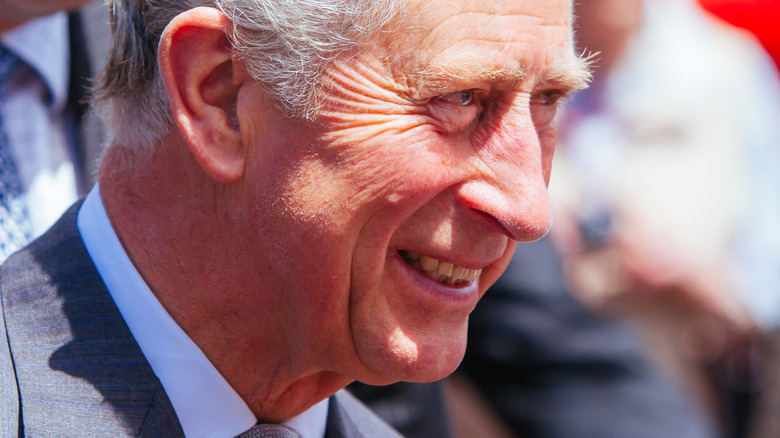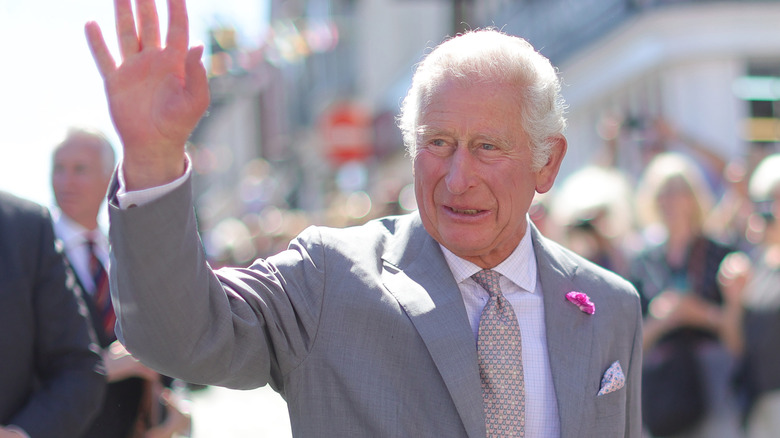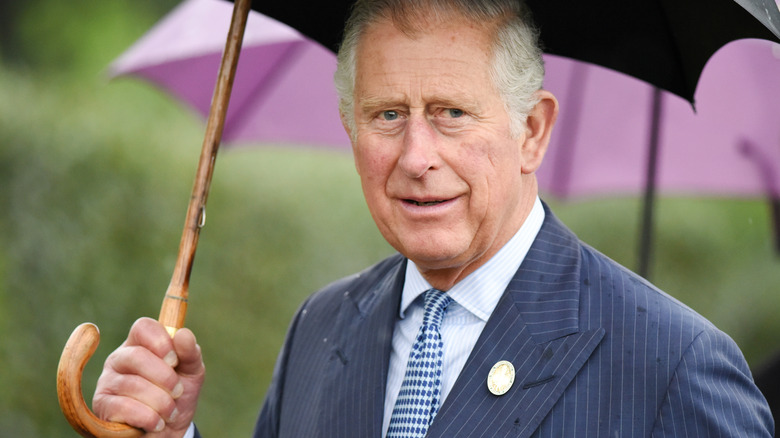Why Prince Charles Will Be Leaving Buckingham Palace As Soon As He Becomes King
While grim, plans for the death of any large-scale political figure are necessary to help families, governing bodies, and the public move through a time of great emotion and change. In 2021, Politico got ahold of the specific day-by-day schedule for the days following Queen Elizabeth II's death, titled Operation London Bridge. The meticulously detailed and timed plans reveal much about how the kingdom will grieve and bid farewell to its sovereign.
Operation London Bridge includes a detailed itinerary for the queen's family members and British government leaders. The day of the queen's death and the following days have code names to add clarity to the many moving parts of the kingdom's mourning process. The day the queen dies is called D-Day, and the following 10 days after are numbered accordingly, D-Day + 1, D-Day + 2, etc. Prince Charles will be busy during those 11 days.
Naturally, one of the first people to be made aware of the queen's death will be Prince Charles (per the Mirror), and he will have little time alone to grieve his mother's passing. For Prince Charles, the days following the queen's death will be a mixture of ceremonies mourning his mother and her public role as the country's queen, in addition to laying the foundation for his reign. These events will take place away from Buckingham Palace.
Duty will take Prince Charles away from London
Prince Charles will automatically become king at the moment of Queen Elizabeth's death, explains Nicoletta Gullace, an associate professor of modern British history at the University of New Hampshire. The transfer of title is "a quasi-mystical transformation that is marked ceremonially and legally the next day," Gullace told Reader's Digest.
Politico reports the newly made King Charles' responsibilities will begin immediately on D-Day, and he is required to address the kingdom at 6 p.m. sharp. On the morning of D-Day + 1, at approximately 10 a.m., the Accession Council will officially make Charles king. According to the Mirror, the only day that doesn't include plans for Prince Charles is D-Day + 2. An extensive travel itinerary and time away from Buckingham Palace are scheduled for the following days. He will receive his first motion of condolence — essentially an official statement of sympathy — at Westminster Hall on D-Day + 3.
Prince Charles will embark on a multi-day trip around the UK after the ceremonies at Westminster Hall. The journey is a gesture of goodwill to the local governments he will visit. Equally, Politico explains, it is an opportunity to connect and grieve with the British people. His first stop will be Scotland, where he will visit the Scottish parliament and attend a service for the queen at Edinburgh's St. Giles Cathedral.
King Charles will travel for days
On the trip, King Charles will meet with local government representatives and leaders, strengthening connections as he exercises his new powers as sovereign, according to Reader's Digest. D-Day + 4 takes King Charles to Northern Ireland, where he will receive a motion of condolence at Hillsborough Castle. Because of the symbolic foundation-laying that must occur as he mourns the loss of a parent, Charles has undergone a lifetime of preparation for this very moment.
Conveniently, the multi-day trip that will take Charles away from Buckingham Palace will also assure the new king is out of London when the city is anticipated to be overly crowded, as people flock to pay respects to the queen. The Hall of Westminster will be open to the public nearly around the clock. Predictions include over-full streets, public transportation, hotels, and restaurants. The king's last destination is Wales on D-Day + 7. There, he will be given a motion of condolence and attend a service at Llandaff Cathedral in Cardiff (per Politico).
The days on the road will allow the new king to connect with the British people and start his relationship with them anew. On D-Day +10, King Charles will return to London for the queen's funeral at Westminster Abbey and the following processions in London and Windsor. The queen will be buried at Windsor Castle in the King George VI Memorial Chapel. There, Charles, along with the world, will bid farewell to Queen Elizabeth II.


